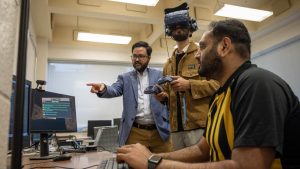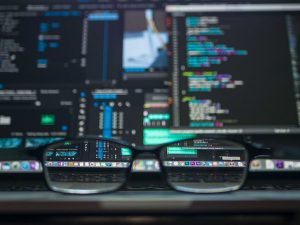
April 8, 2025
Exposing the security and privacy risks posed by incorporating AI in XR
Advances in AI are escalating the arms race between cyberattackers and defenders.

Feb. 4, 2025
USS Missouri crew visits Mizzou Engineering
The crew members shared their experiences in the Navy’s nuclear community with midshipmen of Mizzou’s Navy ROTC program.

July 9, 2024
Hackers beware: Research shows AI can assist with cybersecurity
A Mizzou researcher and collaborators found that leading chatbots can pass certified ethical hacking exams.

Oct. 10, 2023
Calyam leading efforts to establish zero trust cybersecurity approach for battlefield communications
A Mizzou Engineer is leading efforts to establish a new cybersecurity approach to better protect classified information and communications on the battlefield. Prasad Calyam — Greg L. Gilliom Professor of Cyber Security and director of the Mizzou Center for Cyber Education, Research and Infrastructure — is leading the project as Principal Investigator of a National Security Agency grant.

Sep. 16, 2020
Mizzou Cyber Range to Focus on Cyber Pretense Strategies
Hackers are getting smarter about ways to steal sensitive information from the cloud. Now, a new “Mizzou Cyber Range” will train the next generation of cybersecurity professionals to fight back using cyber pretense strategies. Armed with new grant funding from the National Security Agency, Prasad Calyam and his team are building the Mizzou Cyber Range through the MU Center for Cyber Education, Research and Infrastructure.

July 16, 2019
Mizzou Engineering’s Chadha protecting your data, identity
While hacking databases is the main way for interested parties to gain users’ personal information, it’s not the only possibility. Intrepid attackers can use perfectly benign means to do so. How? By using readily available aggregate data — for example: census data, medical data focused on how many people in an area suffer from a specific illness, consumer trend data, etc. — and using it to focus on specific individuals.